Demolish Me
The present-day lust for ruins is nothing new. In fact, it’s nearly as old as any ruins themselves. From a flattened Louvre to Percy Bysshe Shelley, a journey to the dawn of ruin porn.
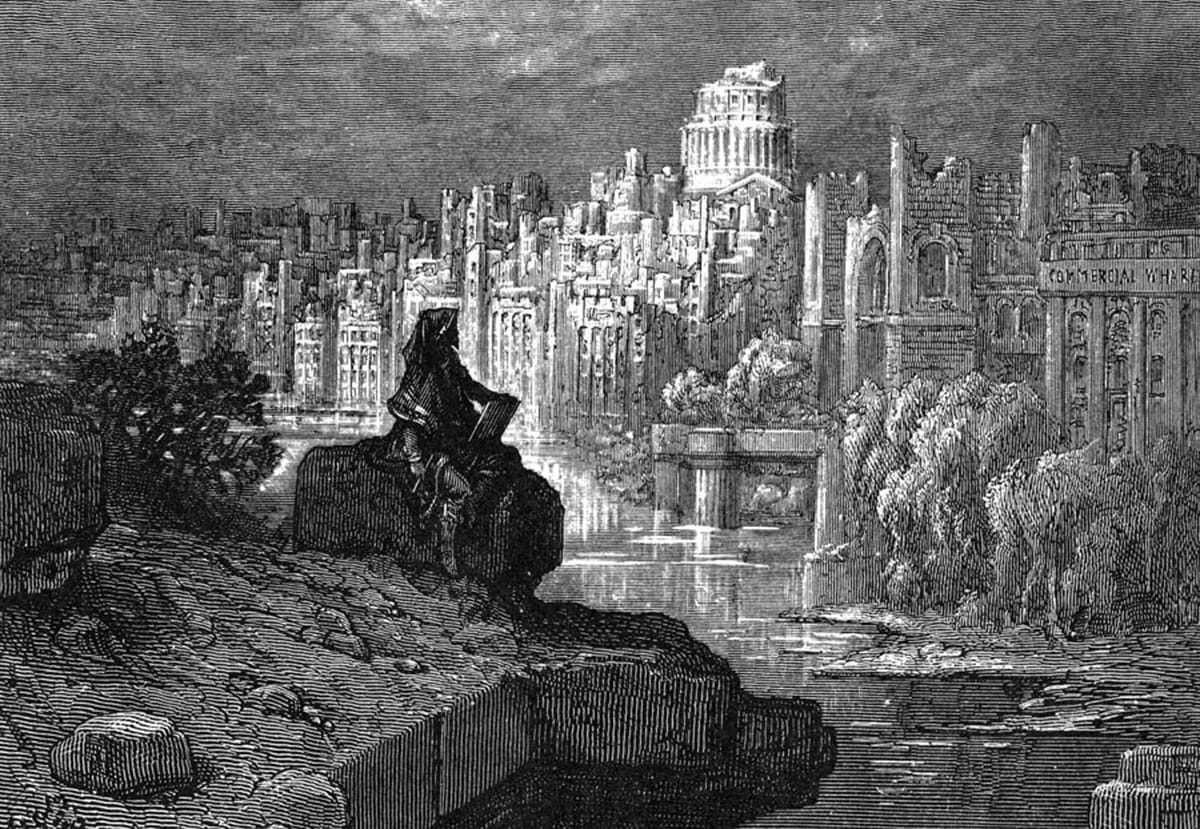
A traveler pauses, perched on a boulder by a cool riverside to take in the view along the far bank. The scene that meets his gaze is that of a desolate and devastated London: a ravaged panorama of collapsed roofs and crumbling walls, with vegetation overgrowing amongst the ruins. Emerging high above the surrounding rubble St Paul’s cathedral still stands, but its iconic dome is caved-in like a crushed eggshell.
Dramatic scenes like this are familiar from any of the post-apocalyptic films appearing in cinemas over recent years. But this imagined vista is from Gustave Doré’s engraving “The New Zealander,” dating back to 1872.
These days, ruin porn is a thriving cultural phenomenon. It includes Yves Marchand and Romain Meffre’s haunting images of Detroit, and the city of Pripyat abandoned since the Chernobyl disaster. The Tate Britain in London currently has a whole exhibition devoted to ruin lust through the ages, from 18th-century drawings of Roman ruins to photography of the broken remnants of WWII. I’ve recently published a book on the science and technology needed to reconstruct civilization from scratch, and during the research I was drawn powerfully to these images of wrecked cities and ancient ruins. They got me thinking about how long the fragments of our own modern society might persist. Of course, ruin porn isn’t just oil paintings and gritty photography. There’s also a rich seam in the cinematography of post-apocalyptic films like The Road or I Am Legend, and a number of successful recent computer games have also excelled in this aesthetic, such as Fallout 3 and The Last of Us.
But the symbolism of ruins has been appreciated for centuries. For example, the Exeter Book, an eighth-century codex, contains this poem by an unknown Anglo-Saxon, lamenting Roman ruins:
Burg-places broken, the work of giants crumbled.
Ruined are the roofs, tumbled the towers,
Broken the barred gate: frost in the plaster,
Ceilings a-gaping, torn away, fallen,
Eaten by age…
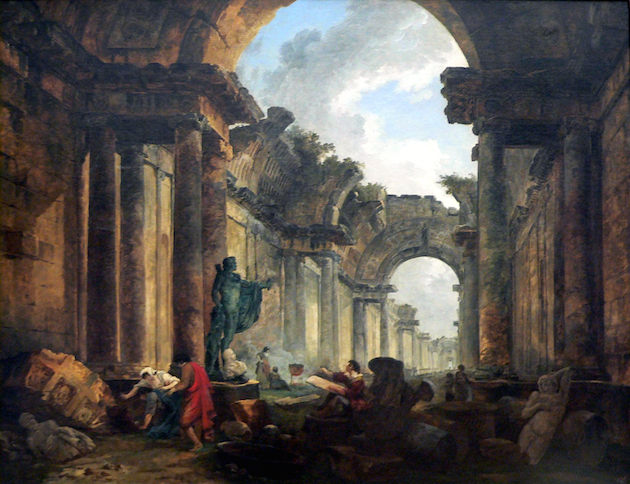
Ruin lust grew with fervor from the 18th century: the soft, pastel hues of J.M.W Turner’s Tintern Abbey, Hubert Robert’s “Imaginary view of the Gallery of the Louvre as a Ruin,” the ruined cathedrals and shipwrecks of Caspar David Friedrich, and Gustave Doré’s “The New Zealander.” Eighteenth-century English aristocrats even went to the extent of constructing fresh ruins on their estates—follies—for exhibiting their wealth and sophistication whilst picnicking in the shade of the contrived remnants.
It is within this zeitgeist that one of the earliest examples of post-apocalyptic fiction was born, Mary Shelley’s novel The Last Man, published eight years after Frankenstein. The Victorians in particular were obsessed with the decline and fall of Rome and conscious that their mighty, globe-spanning British Empire could also succumb to chaos and disintegrate.
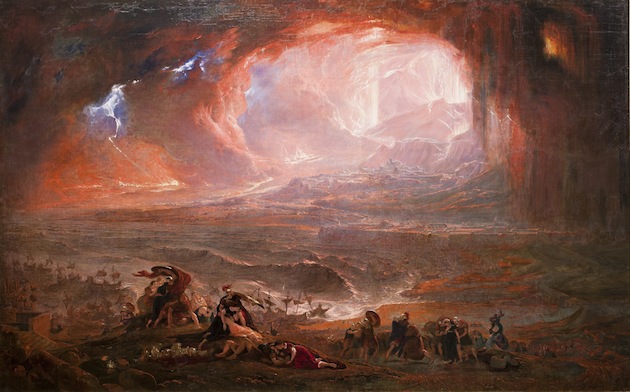
Ruins evoke a complex mix of emotions. It’s partly a guilty or even gleeful delight in the aftermath of destruction—either rapid from fire or other natural disaster, or due to the slow but relentless decay of the elements. It is the melancholic beauty of the fragments that remain from a once-opulent edifice. It’s also a totem to the struggle between human will and the relentless forces of nature: of gravity and rot and vegetation. This picturesque decay plays with the dichotomy between our artificial constructions and the wildness of nature poised to overwhelm the built world as soon as an opportunity arises.
Ruin lust is all of these things. But of course, it is also something far more important, far more symbolic than that. Ruins evoke a sense of foreboding and uneasiness. The deepest allure of ruins, the source of their frisson, is not that they speak about the past, but about the future. Ruins are a premonition, a warning from history about our own inescapable destiny. They are a reminder that all eventually will be lost, even that which is grand and mighty. This antidote to hubris is explored powerfully by Percy Bysshe Shelley in his 1818 sonnet, describing the broken remains of an ancient Egyptian statue and the inscription it bore:
My name is Ozymandias, king of kings:
Look on my works, ye Mighty, and despair!”
Nothing beside remains. Round the decay
Of that colossal wreck, boundless and bare
The lone and level sands stretch far away.
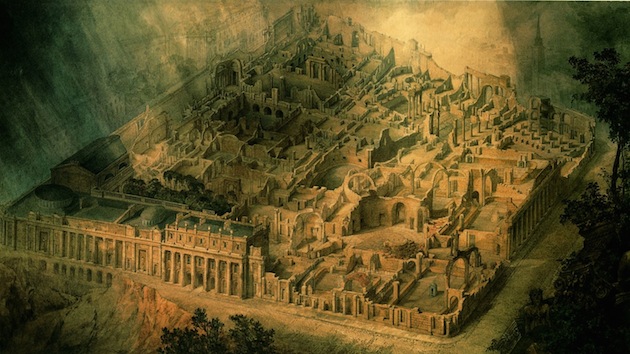
Perhaps the most poignant examples of ruin porn are those depicting familiar or well-loved landmarks in a future state of devastation, a frisson played masterfully by Gustave Doré and Hubert Robert (who became nicknamed Robert des ruines) in the 18th century. And today, this marks the subtle but key difference between disaster movies and post-apocalyptic movies. The money shot in a catastrophe movie invariably indulges in the destruction of famous buildings and monuments. But in future dystopias, the role required of the ruin porn is to provide viewers with context to the scene and deliver the feeling of discomfort from the incongruity of the familiar landmark and the new world order around it. This means that in apocalyptic films the familiar landmarks are the first to be destroyed; but in post-apocalptic movies they are all that remains. (With perhaps Planet of the Apes being the pinnacle example of this: only the hand of the statue endures). The great architect Sir John Soane even commissioned the painter Joseph Gandy to imagine his own new creation the Bank of England in a future state of ruination and destruction.
In this way, every disintegrating edifice or monument is like an inadvertent memento mori, an allegory of death and decay, as used by Renaissance painters: a bowl of fruit, an hourglass timer, or the anamorphic skull in Holbein’s “The Ambassadors” being a particularly good example.
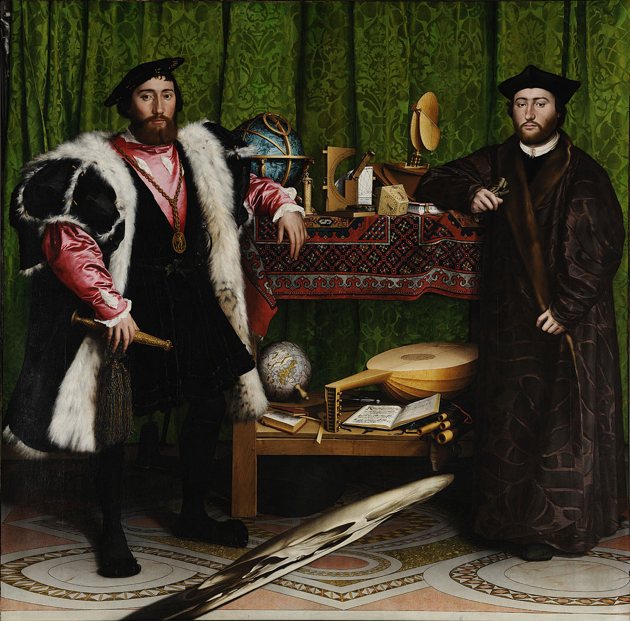
These are reminders of the transience of beauty and the impermanence of all things, including our lives. And in the case of Roman or Mayan ruins, for example, a stark demonstration of not only the mortality of us all as individuals, but that even entire civilizations themselves are fragile and can collapse and die.
As Denis Diderot, the great encyclopedia compiler, put it in 1767, “The ideas ruins evoke in me are grand. Everything comes to nothing, everything perishes, everything passes, only the world remains, only time endures.”
